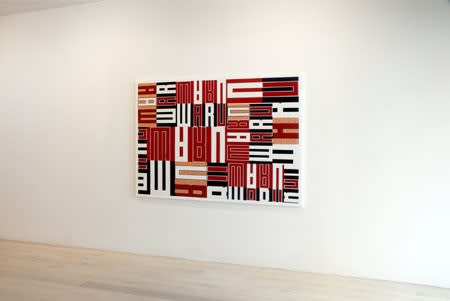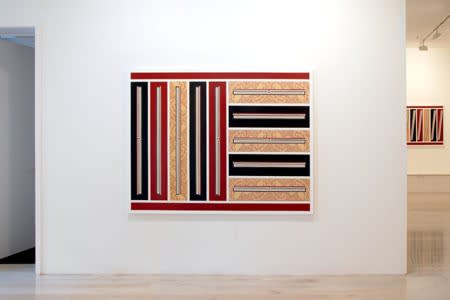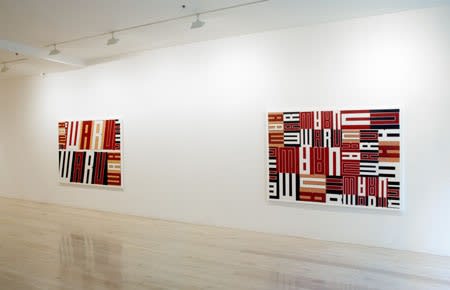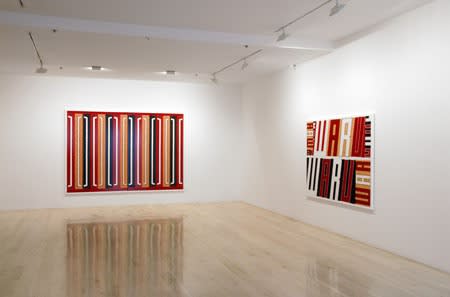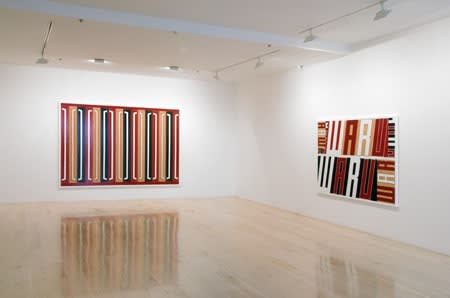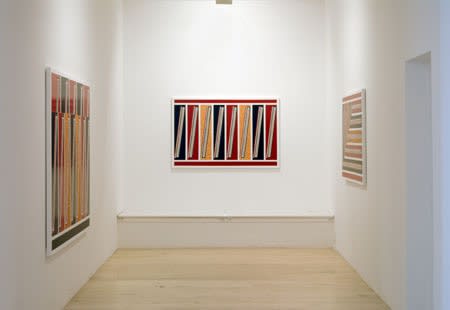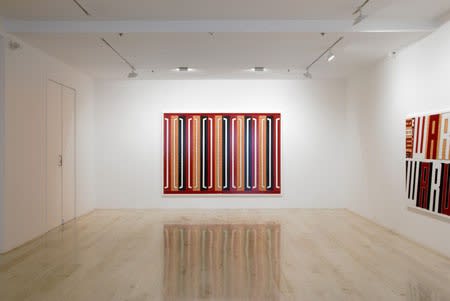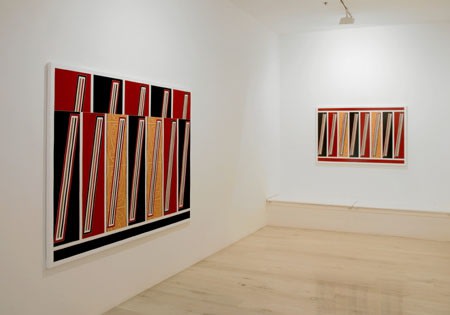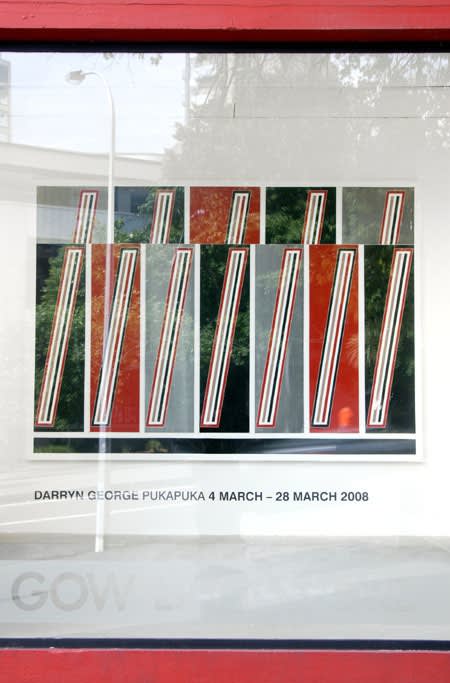Pukapuka: Darryn George
Gow Langsford Gallery is pleased to present the first solo show of its 2008 calendar with new works by Christchurch-based painter Darryn George. The occasion also marks George’s inaugural exhibition with the gallery having joined Gow Langsford recently in 2007.
Entitled Pukapuka this collection of paintings operates on numerous levels. George’s geometric forms may be read as book shelves, a collection of books or a library of sorts - the word ‘pukapuka’ being the Maori transliteration of ‘book’. Within these arrangements a basic assortment of symbols and iconography is interspersed- fragments of maps and bridges are enlisted as metaphors to encompass the notion of ‘salvation’. Within this context the idea of a ‘book of salvation’ naturally generates associations with the bible and by extension Christian theology. Whilst references to the Old and New Testament may be insinuated, George’s paintings are not bound by them, offering the viewer freedom to explore alternate possibilities. On another level, George fuses the traditions of customary Maori art forms with Western abstraction extending the dialogue first established by Gordon Walters in an innovative and thoroughly engaging way. The artist employs generic kowhaiwhai and moko motifs to enrich the layers beneath broad bands of colour. These customary curvilinear designs functioned as an expression of one’s whakapapa. In George’s paintings they become the foundation upon which he composes his own geometric interpretations motivated by the rhythms and cadences evident in traditional designs. In many cases George experiments with the axial orientation of kowhaiwhai so that text, letters or motif combinations are flipped, rotated and reflected. While these paintings acknowledge a formalist aesthetic, on close inspection they reveal surprisingly rich texture. Alternate bands of colour are often realised with a controlled application of thick impasto leaving three dimensional impressions that emulate the chisel ridges formed in Maori wood carving. Many of the patterns chosen by the artist signify ‘mana’ a concept which denotes characteristics such as power, strength and prestige. One particular recurring kowhaiwhai motif employed by George is the ‘Mangotipi’- a design influenced by a creature of formidable strength and resilience- the great white shark. George’s paintings represent a thoughtful consideration and consolidation of diverse cultural, artistic and theological dialogue.
